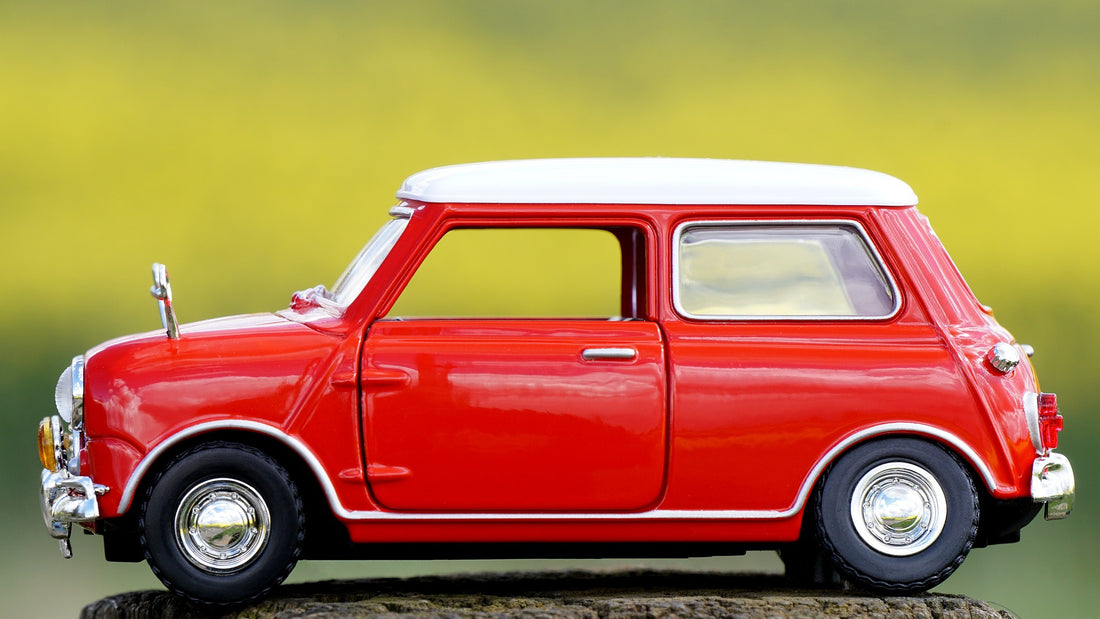Diecast toy cars are a great way to collect and appreciate high-quality miniature replicas of famous vehicles including cars, bikes, trucks, racing cars, vintage cars, and your favorite action figures from film and TV.
Though diecast models have been around since the early 20th century, they remain a popular hobby for millions of collectors all over the world. With the look and feel of your favorite cars, trains, buses, and planes, an extensive diecast toy collection is a great addition to any home.
And with a wide range of diecast model cars available, there is a model for every collector’s personal choice. Manufacturers work tirelessly to make diecast model cars near-perfect replicas on a small scale and they are intricately made with an amazing level of detail and accuracy.
So, you might wonder how manufacturers can attain such accurate and stunning details on these incredibly small-sized cars. Here, we will be taking a look at what exactly is a diecast toy car, how toy cars are made, and the materials used in the production process. Keep reading to learn more.
What Are Diecast Toy Cars?
A diecast toy car is a miniature replica of a real car that is made using a die-casting or metal-casting method. These scale models are usually made of a zinc or lead alloy and come fully formed as a single piece that generally portrays the real vehicle on a small scale.
These diecast models are much more than simple toys, as they demonstrate a higher level of quality than plastic models, and they also have a greater shelf life.
And it is a huge advantage for diecast model collectors, as it allows you to display and share them from generation to generation. Whether you are looking for a diecast car, plane, truck, bike, or tank, there is a diecast model out there for everyone.
How Are Toy Cars Made?
As we have already mentioned, diecast toy cars are created using a technique called die-casting or metal casting. And this process is an effective and efficient way of mass-producing diecast models while also maintaining high consistency and quality.
Once you know more about the production process of these products, then you will better understand why high-quality diecast models can be quite expensive. Moreover, you will understand the care, effort, and attention that manufacturers put to create stunning models that amaze many car lovers.
1. Die Casting
The die-casting process involves forcing or injecting molten metal into a highly-pressurized cast or die which holds the shape and form of the desired model to create the desired shape. And the mold or die will have two sides that must enclose together tightly so that the metal might cool into the correct desired shape.
A hydraulic press will generally enclose it to create the pressurized environment into which the molten metal will enter. And high pressure means a fast fill of the die, which is extremely crucial as it ensures the entire cavity is filled before the cast solidifies. Generally, manufacturers will just diecast the casing of the car.
2. Plastic Injection
You should understand that the diecast process generally creates only one piece of a diecast model car. And a diecast toy car generally requires hundreds of pieces for assembly. But, manufacturers will not use the diecast process to create all those pieces, as that can be really costly.

Instead of that, manufacturers will use the plastic injection method to create all the other parts such as tires, wheels, and grills. This process is almost similar to diecasting, however, it is done by injecting heated or molten plastic into a mold, usually with multiple parts to create a desired shape.
3. Painting
Now, it is time to add some color to these pieces and there are different types of painting processes. These pieces will generally get spray-painted or airbrushed either mechanically or by hand. And this is usually done with a special paint that is designed to resist scratches and fading.
However, you will only see hand-painted pieces in the case of small manufacturers, as it is usually time-consuming, but it also allows for finer details. And when the first layer of paint is done, then the pieces will generally bake to make the paint job more durable and long-lasting.
After that, the pieces will dry and go to a silkscreen or pad printer to print designs, details, and any graphics on the car. However, pad printer machines can only apply one layer of color at a time, so if the designs on the car have more than one color, then they must go through that process again.
4. Glass Pieces
Generally, manufacturers use various processes to create glass pieces, however, the main two ways are - plastic injection and vacuum forming. In most cases, manufacturers use plastic injection for mass production as it saves time and is cost-effective.
Also, mass producers can cast each piece together, however, higher quality diecast toy cars would require casting each piece at a time. And in the case of vacuum forming, it stretches and heats the plastic until you can form it against the mold and it creates a crystal clear finish that adds a depth of realism and extra quality to diecast model cars.
5. Headlights & Taillights
The headlights and taillights need a mold like every other piece in the model car. Generally, manufacturers will use the plastic injection method with the correct mold. However, you should remember that for high-quality diecast car models, usually, there will be separate molds for the marker, taillights, and turn signal.

Also, manufacturers generally use different colors of injectable plastic to get the desired finish for their lights. By using different colors, separate molds, and hand painting, you can add a certain level of detail that brings realism to a toy car model.
6. Assembly
Now, all the pieces or parts are assembled together using screws and glue. You already know that each piece for a model car must be diecast or plastic injected separately. However, you might get surprised after knowing that assembly is the most labor-intensive aspect of the whole manufacturing process.

Most manufacturers will generally use a conveyor belt system, however, one person can add a piece at a time and send it down the line. But, in the case of more limited production, the assembly process is more hands-on as a person will assemble parts on several cars before sending that bundle to the next station.
7. Quality Control
When the model is completely assembled, it is inspected for quality and any errors. And quality control is a really important part of the production process of diecast toy cars. Because it ensures that all of the models being made- bikes, cars, or action figures meet the required standards of quality and are free from any defects or errors.
Also, quality control ensures that the whole production process can run smoothly and efficiently. And when the diecast models have gone through the quality control process, they will be completely safe and reliable to buy, and they will look exactly as expected.
Finally, the model toy car is packaged for delivery to the customer and this entire process can create an amazing miniature replica of your favorite car, bike, truck, or action figure. Collecting diecast models is an excellent way to show your love and passion for vehicles and much more.
Materials Used In The Production Process
Diecast toy car models are generally made from a combination of metal and plastic. And metal alloys such as zinc and aluminum are mainly used for their strength, weight, and their ability to be molded and painted into realistic forms.
Usually, plastic materials are used for the more intricate parts of a diecast model such as the wheels, doors, and windows. Also, rubber is generally used to provide the required grip and traction on a model's wheels.
So, the materials used in the production of diecast toy cars depend on the specific effect and purpose of the model.
How To Start A Diecast Collection
Now that you have a better idea of what diecast models are and how these models are made, you are probably ready to start your very own collection. But before you begin forming your own personal collection of models, here are a few things to consider.
1. Model Size
First, you should consider the diecast model scales. Diecast models come in a wide range of scales such as 1:12, 1:18, 1:32, 1:36, 1:43, 1:64, and more. So, you should think about how big you want your diecast model to be. Here, the rule is - the higher the scale, the smaller the model.
2. Model History And period
Next, you should think about whether you want something from the early 20th century, or something more modern. Because, focusing on certain eras can really help you refine your diecast collection, and can also make for some amazing historical displays too.
3. Model Type
Also, if you don’t already have a clear idea in your mind of what you want to actually collect, then you should think about the type of model you are interested in. There are so many options from cars and bikes to aeroplanes and action figures. At TinyTown, we stock more than 5000 different types of diecast models, so there’s plenty of choice for you.
4. Model Brand
Finally, you need to familiarise yourself with the different brands that made diecast models, such as Majorette, Maisto, Matchbox, Oxford Diecast, Schuco, and Bburago, each with different collections to explore.
Also, there are many other top brands offering lots of different models, so you can always check them out to get an idea of what is available for you. And if you are looking for high-quality miniature models, then check out our extensive collection.
Buy Your Favorite Diecast Models Today
Whether you are just starting out, or you have been collecting for years- there is no denying the appeal of a diecast model collection. And after reading through the manufacturing process, you can surely feel confident that you picked the correct hobby.
So, if you would like to buy a model, then TinyTown is the best online destination for you to visit. We have thousands of collectible diecast model toy cars, all created with incredible detail and care. So, do you want to add more exquisite cars to your collection? Shop with us and check out our exclusive collection.


2 comments
Excellent 👍
Very well written. Though I have known the manufacture processes for years, it’s good to know that others who do not know, will learn the intricacies of the making of a diecast. I have thousands of models.